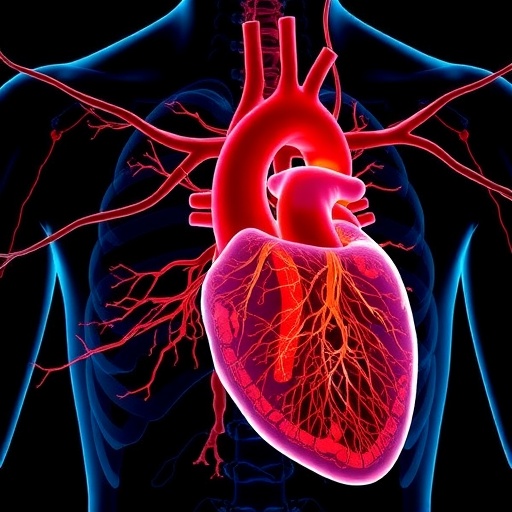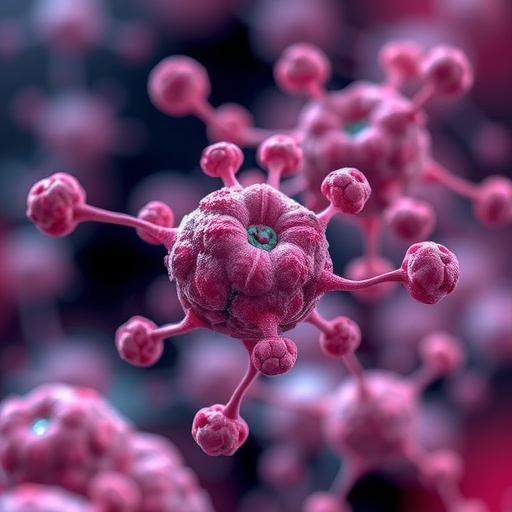
In a groundbreaking advancement in cardiovascular research, two prominent scientists from Boston University’s Chobanian and Avedisian School of Medicine have been awarded a prestigious multiple principal investigator (PI) R01 grant by the National Institutes of Health’s National Heart, Lung, and Blood Institute. This substantial four-year funding of $3.1 million underwrites their ambitious project titled “Thiol redox signaling in aortic aneurysm,” aiming to unravel the elusive molecular underpinnings of aortic aneurysm—a lethal vascular condition often diagnosed too late for effective intervention.
Dr. Francesca Seta, an associate professor specializing in the molecular pathology of vascular diseases, directs her research towards deciphering the complex biological pathways regulating the vascular smooth muscle cells that line our arteries. Her recent focus zeroes in on understanding the molecular drivers behind arterial stiffening and the formation of aortic aneurysms and dissections—both degenerative pathologies that threaten the structural integrity of the aorta, the body’s largest blood vessel. These aneurysms are dangerous dilatations of the vessel wall, frequently symptomless until catastrophic rupture occurs, rendering them a silent killer despite their critical impact on cardiovascular morbidity and mortality.
Joining Dr. Seta is Dr. Jingyan Han, an assistant professor whose expertise lies in the molecular biology of atherosclerotic cardiovascular disease. Han’s investigations emphasize the role of redox signaling—the dynamic cellular process involving reversible oxidation and reduction states—in driving endothelial dysfunction. This dysfunction is a hallmark of vascular disease progression influenced by known risk factors such as hyperlipidemia, aging, and chronic alcohol abuse. Their collaborative project ventures into the redox-dependent molecular networks shaping vascular health and disease, with a special lens on post-translational oxidative modifications that may compromise vascular homeostasis.
Central to their inquiry is the enzyme sirtuin-1 (SIRT1), a lysine deacetylase commonly referred to as the “longevity” gene, given its far-reaching implications in aging and metabolic regulation. SIRT1’s activity is modulated through redox signaling pathways which can induce oxidative post-translational modifications, potentially disrupting its vasoprotective functions. The principal investigation questions whether oxidative alterations to SIRT1 within the aortic wall precipitate degradation processes culminating in aneurysm formation and whether inhibiting SIRT1 oxidation can serve as a viable therapeutic strategy to halt or reverse aneurysm development and prevent dissections, a catastrophic tearing of the aortic wall.
“Our research endeavors to fill critical gaps in understanding the redox mechanisms that underlie thoracic aortic aneurysm and dissection (TAAD),” explained Dr. Seta. “By targeting these fundamental molecular derangements, especially in high-risk populations like individuals with genetic conditions such as Marfan syndrome, we aim to pioneer targeted therapies that currently do not exist. This could dramatically alter clinical outcomes by moving beyond symptom management towards precise molecular intervention.”
Expanding on this, Dr. Han commented, “The paradigm of redox biology has traditionally focused on its pathological consequences. However, our project conceptualizes redox signaling not merely as a biomarker of vascular injury but as an active therapeutic target. This framing heralds a new frontier in redox medicine, with the capacity to transform how we approach chronic vascular diseases through manipulation of oxidative molecular circuits.”
Dr. Seta’s prior research has contributed substantially to the field by identifying B-cell lymphoma/leukemia 11B (Bcl11b) as a pivotal transcription factor in maintaining vascular smooth muscle cell functionality and arterial structural integrity. Furthermore, her exploration into SIRT1’s vascular roles demonstrated that both genetic enhancement and pharmacological activation of this deacetylase yield antioxidant and anti-inflammatory effects. These findings underscored SIRT1’s protective capacity against metabolic syndrome-induced arterial stiffness and cardiac dysfunction, and conversely, revealed that deficiency of SIRT1 in vascular smooth muscle precipitates aortic dissections in murine models treated with angiotensin II.
Complementing these molecular insights, Dr. Han has developed an innovative vascular imaging technology using optical coherence tomography (OCT), enabling noninvasive, label-free, and real-time three-dimensional angiography alongside hemodynamic assessment of femoral arteries in live experimental models. This sophistication permits high-throughput automated data acquisition and processing, an invaluable tool for studying disease progression and therapeutic responses in vivo.
Seta’s academic journey includes a BSc/MSc from the Università degli Studi “G. d’Annunzio” Chieti-Pescara in Italy and a PhD from New York Medical College, while Han completed her BA and MS at Peking University in China followed by a PhD from the University of Illinois. Their complementary expertise positions them uniquely to tackle the multifaceted challenges of vascular redox biology.
As cardiovascular diseases remain among the leading causes of death globally, this NIH-funded study stands at the precipice of a paradigm shift. By integrating cutting-edge molecular biology, innovative imaging technology, and sophisticated animal models, the research promises not only to elucidate critical disease pathways but also to unveil novel therapeutic avenues. Should their hypothesis hold true, targeted modulation of SIRT1 oxidation could emerge as a pioneering intervention, offering hope to patients with aneurysms and inspiring broader applications in redox-targeted vascular medicine.
This ambitious endeavor exemplifies the dynamic convergence of fundamental science and translational potential, poised to forge new paths in combating silent but deadly vascular diseases. The research community and clinical spheres alike await the outcomes, which may redefine redox signaling’s role from a molecular hallmark of disease to a basis for healing.
—
Subject of Research: Molecular mechanisms of redox signaling in aortic aneurysm and vascular smooth muscle biology involving sirtuin-1.
Article Title: Thiol Redox Signaling in Aortic Aneurysm: A New Frontier in Vascular Medicine
News Publication Date: Not specified
Web References: Not provided
References: Not provided
Image Credits: Not provided
Keywords: Diseases and disorders, Vascular disease, Aortic aneurysm, Redox signaling, Sirtuin-1, Thoracic aortic aneurysm and dissection (TAAD), Vascular smooth muscle, Oxidative post-translational modification, Cardiovascular research.
Tags: Aortic aneurysm researcharterial stiffening and aneurysmsBoston University cardiovascular studiescardiovascular morbidity and mortalityChobanian and Avedisian School of Medicinedegenerative pathologies of the aortafunding for medical researchmolecular drivers of aortic aneurysmsNIH grant for cardiovascular researchredox signaling in vascular diseasessilent killers in cardiovascular healthvascular disease molecular pathology





